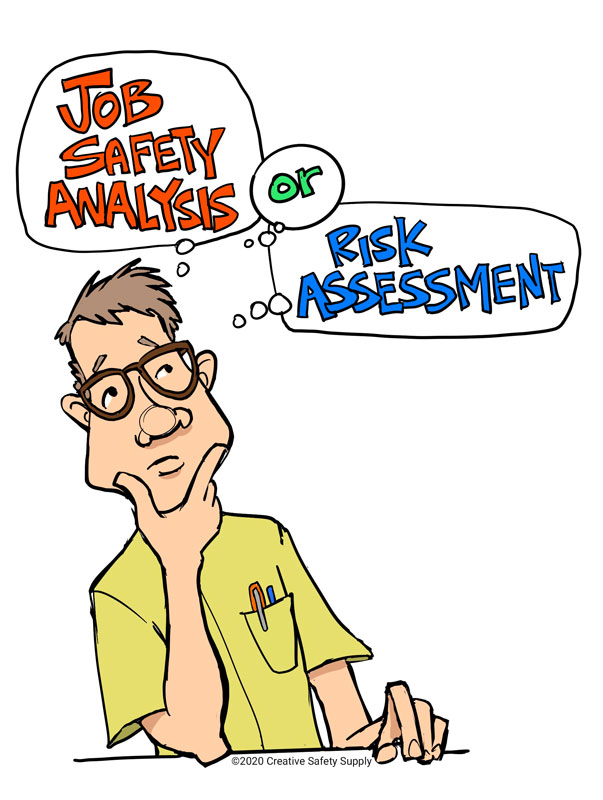
Judging just on the names and the broad reason for performing them, a job safety analysis (JSA) and a risk assessment sound like they would be very similar activities. While it is true that they have some things in common, they are unique tasks that should be performed in any workplace environment. When used together, a company can make significant strides toward improving safety for the facility as well as the employees.
What is a Job Safety Analysis?![job-safety-or-risk.jpg JSA or risk assessment]()
A JSA is a formalized process that is used to identify specific dangers related to specific tasks that take place in the workplace. This is done by breaking down a job into separate tasks and looking for potential hazards at each of those steps. Anywhere that danger is found, new controls should be put in place to keep workers safe.
What is a Risk Assessment?
A risk assessment is a process that is used to look for potential hazards in a facility. Any risks that are found during this process will have new controls created to help mitigate them. This can be done either as a regular workplace safety task or after an incident occurs.
So…What’s the Difference?
While they do sound quite similar, the most important difference is that a job safety analysis looks at job-specific risks while the risk assessment looks at a bigger picture. The risk assessment will identify risks throughout the facility, and not just those that may directly impact an employee. For example, risk assessments would look to identify environmental hazards, and put processes in place to mitigate that risk, while a job safety analysis would not. The job safety analysis looks at individual tasks, which often allows the safety professional to look much deeper into the potential hazards.
Companies can benefit from using both of these great tools to identify potential hazards, and come up with controls to keep everyone safe. In many cases, a risk assessment will be performed first to find and address higher-level hazards, and then a job safety analysis will take place next to look for more granular dangers.
Similar Questions
- What is a job safety analysis?
- What is the goal of a risk assessment?
- What is a risk assessment?
- What is composite risk management (CRM)?
- What is a JHA?
- What does JSA stand for?
- What does a safety professional do?
- What is the hierarchy of hazards?
- What are hazard controls?



